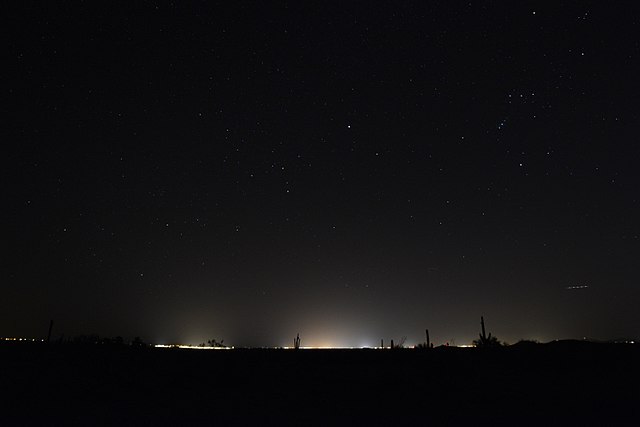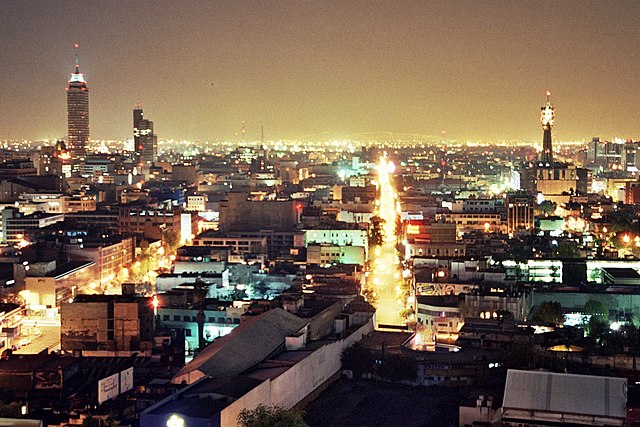Light pollution is the presence of any unwanted, inappropriate, or excessive artificial lighting. In a descriptive sense, the term light pollution refers to the effects of any poorly implemented lighting sources, during the day or night. Light pollution can be understood not only as a phenomenon resulting from a specific source or kind of pollution, but also as a contributor to the wider, collective impact of various sources of pollution.
Light pollution over Melbourne, Australia
A light pollution source, using a broad spectrum metal halide lamp, pointing upward at Uniqema factory, Gouda, the Netherlands
The city of Phoenix, seen from 55 miles (89 km) away in Surprise, Arizona
An office building is illuminated by high-pressure sodium (HPS) lamps shining upward. Much light goes into the sky and neighboring apartment blocks, causing light pollution.
Skyglow is the diffuse luminance of the night sky, apart from discrete light sources such as the Moon and visible individual stars. It is a commonly noticed aspect of light pollution. While usually referring to luminance arising from artificial lighting, skyglow may also involve any scattered light seen at night, including natural ones like starlight, zodiacal light, and airglow.
Mexico City at night, showing skyglow
In this 10-second exposure, facing south toward Sagittarius, three forms of light pollution are present: skyglow, glare, and light trespass.
In remote areas on moonless nights clouds appear dark against the sky. In or near developed areas skyglow is strongly enhanced by clouds.
Skyglow is mostly unpolarized, and its addition to moonlight results in a decreased polarization signal. Humans cannot perceive this pattern, but some arthropods can.








